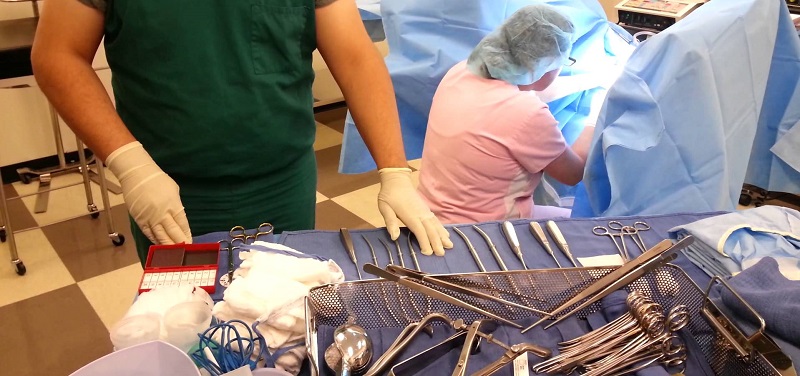What is Abortion:
Parenthood has been considered the most beautiful feeling in the world. Embracing a new life with the utmost love and care is something that every married couple would want to have. Nowadays people are becoming more career-oriented and focused. Even they plan everything before going into the institution of marriage. While accomplishing our life goals, sometimes we have to take a few stern steps – abortion is one of them. Wait…what is abortion? Abortion is a procedure where a couple deliberately ceases a pregnancy. During the abortion procedure, an embryo or fetus gets removed from the womb before it can survive outside the uterus.
Reasons behind Abortions in society:
There are various legitimate reasons behind abortions in our world. Sometimes, these pertain to the woman or child’s health condition, financial condition, birth control, and unexpected pregnancies, etc.
- For the sake of the mother’s physical or mental health, genetic problems
- For the sake of the child’s physical or mental health
- Cases where pregnancy is caused by some sort of crime, such as child abuse, rape, incest, etc.
- Social reasons: poverty, cases where the mother is a minor, birth control
- In some countries, it becomes a matter of government policy
Abortion Procedure:

When the term abortion hits in mind, every woman might shiver for some time thinking about the risks of abortion. Honestly, the picture that comes in front of my eyes is of those big scissors, long tools, blood, and injections. However, the reality is that the entire procedure takes only 10-15 minutes to complete. Many times doctors use an anesthesia at that time, so the woman may not feel the pain at that time; however, she might feel cramps later.
At that time, a woman might want to know a little guide or some “How to and What to” about the procedure. Here is a little guide around that:
- At the time of scheduling the appointment, the gynecologist may give you some instructions to follow.
- Abortions are considered minor surgeries, so you may have to stop eating before a certain time.
- When you visit the clinic, you may have to do some paperwork and give information about your medical history.
- Here the pre-check-up procedure begins including a urinal test, blood test, pregnancy test, body checkup, and sometimes an ultrasound.
- The doctor might also conduct a counseling session with you regarding the methods or types of abortion of your choice.
7 Different Types of Abortion:
#1 Dilation and Evacuation (D&E)
Under this method, the uterus is carefully cleaned by the instruments and tools.
#2 Dilation and Curettage (D&C)
In this method, a sharp curette is used to remove the fetus from the uterus.
#3 Manual Vaccum Method
Here, an injection is used to suction tissues and it causes abortion.
#4 Electric Vaccum Method
Under this method, an electric pump is used to remove the tissues out.
#5 Hysterectomy Abortion
In this method, doctors need to conduct a cesarean to cease the pregnancy.
#6 Chemical Method
If you opt for the chemical method, you will need to intake 2-3 types of drugs to terminate or end the pregnancy. These medicines are generally named mifepristone, prostaglandin, and methotrexate. In simple words, you need to take medicines to remove the fetus from the uterus.
#7 Controversial Intact Dilation and Extraction
This is also known as partial-birth abortion, in this method, the abortion is conducted in two steps. In many countries, this method is banned, as the doctor needs to make a small incision near the skull.
Reading about the above types of abortion might scare you. However, as per doctors, it is not detrimental to health. It is true that less than one woman dies in every 1,00,000 legal abortions carried out by a professional. A government unit in the US reports that 15.9 women died per 1,00,000 live births. Hence, it makes childbirth around 14% more deadly than abortion.
Myths about Abortion Vs Abortion Facts:
Here, let’s dive into some more myths which is very common and general in public view but are actually untrue or say these are abortion facts:
- In most cases, the fetus doesn’t feel the pain – As per the American College of Obstetrics and Gynecologists, the part of the brain which causes pain in the fetuses doesn’t exist before 28 weeks. And abortion is carried out in the early stage of the pregnancy. Hence, it is said that the fetus doesn’t feel pain at the time of removal.
- A contraceptive pill and an abortion pill are not similar – Usually, women think that a contraceptive pill or morning-after pill causes abortion, this is a big myth. A contraceptive pill only obstructs the process of ovulation. It blocks the hormone progesterone so that it can’t support a pregnancy. On the other hand, an abortion pill is a kind of drug which eliminates the embryo which is already implanted in the uterine line.
- Abortion is more common than you think it is – If you don’t know anyone who has had gone through an abortion, you might be correct, but they might not have told you. A lot of people don’t feel comfortable talking about it. In our Indian society, there are a lot of taboos- and abortion is one of them.
- Many people don’t regret their decision of abortion – Pregnancy and giving birth to a new life is considered a physical task; however, it is more psychological which completely changes a woman’s life. Nowadays everybody is educated and think of his good and bad in life. People choose the option to bring in new life only when they are psychologically, monetarily, and physically ready. Hence, people don’t regret their decision of choosing abortion as a path when they are not ready to embrace parenthood.
- Many women who go through abortions are desperate for having children – Yes, it’s true. Not wanting a baby is not the only reason for removing your embryo from the uterus. There are several causes behind it. For example, when parents want a healthy baby- but the baby is having some serious disorders, sometimes pregnancy is fatal for the mother and the child due to some serious issues, or other kinds of reasons.
- Using abortion as birth control does not make any sense – It’s completely unlikely that many women who forget to take pre or post cautions take abortion as an alternative to birth control. As per the researches conducted by medical students, if a woman is committed to have unprotected sex throughout her life, she may have to go through around 20-25 abortions in her entire life which is fatal for a human being. The truth is, in the Indian villages, even after more than 70 years of independence, abortions are being chosen to reduce the number of children in the family. Although, the government is currently running various programs and schemes to educate women about other sources of contraception, still, a vast population is deprived of such schemes.
- When a woman can’t get an abortion, she doesn’t always let the pregnancy continue – There are various reasons that a woman may not get an abortion. Access to a safe place, fetus conditions, woman’s medical health is a few of them. But it is not true that women will always let continue their pregnancies in such situations. When she says, ” I don’t want a child”, she means it. She knows wholly heartedly that having a baby at this stage is not that something she wants. As a result, women opt for other options of abortions. A New York Times report states that various countries have stricken the rules of abortion, and as a result, the google searches for DIY abortion have risen.
- Access to legal and safe abortion has become a public health issue – People who live in metro cities and towns have proper medical facilities, however, the scenario is not the same in the Indian villages. Still, 1 out of 20 women goes to a hospital during labor pain. They give birth to their babies at home. Their mothers-in-law, midwives, and obstetricians execute the complete childbirth at home. A report by The Times of India says that midwives use blades, broken glasses, and bangles to cut the umbilical cord of the women delivering babies. Now we can conjecture that the situation is certainly worse in the cases of abortions. Access to legal and safe abortion is indeed a public health issue. The government should look into this matter and should take steps to resolve this issue.
- You don’t have to be so-called “thoughtless and careless” to need an abortion – The Indian society is full of taboos all around. If you need an abortion, the stereotype of being irresponsible, incautious, thoughtless, and even uneducated suddenly arises. It seems like, if you don’t want to have kids, don’t have sex! It is as same as if you don’t want to have nightmares, don’t sleep! Nobody can refrain a human being from something which is a part of life and the reason behind the existence of human life on this planet. Yes, you can take precautions, but nothing is 100% assured in this world. If a clear-minded woman chooses an option of abortion at a certain time in her life, it is the most responsible and educated thing she does.
- Many people change their decision of getting an abortion to continue the pregnancy – It is revealed by the doctors that they coerce people to continue the pregnancy (in case of no child or earlier one child), however, the decision is completely theirs. Many times people change their minds at the eleventh hour and decide to continue the pregnancy ahead.
Risk and Side Effects Involved in an Unprofessional Abortion:
The above explanation clearly explains that safe abortion is a right for every woman. However, a safe, hygienic, and professional abortion is not available to all. And the fact that if the abortion is not done properly can cause harm damage cannot be denied. The below are the points which discuss the abortion facts, side effects, and risks of abortion:

Persistent Bleeding
During an abortion, doctors detach the placenta from the uterus, hence bleeding is common after ceasing pregnancy. But, sometimes the situation does not remain common and the woman may begin getting heavy and persistent bleeding. The post-abortion bleeding is not like periods. Most of the blood in the connecting vessels may continue in the form of heavy bleeding.
Some parts may be left inside
This is the most common and the most dangerous side effect of pregnancy. Sometimes when not conducted by a professional, some parts of the fetus might be left inside the uterus. In such cases, you need to visit again to the doctor to remove the residual parts and it is very threatening.
Uterus Perforation
The uterus has to be invaded by many types of tools during an operation. In some cases, these tools might penetrate a vessel that they shouldn’t. Hence, the uterus can become perforated, and if bleeding is not controlled at the right time, it may lead to death. Even if the woman survives out of this situation, she may suffer from anemia.
Cervical Injury
In normal cases, the cervix is closed and rigid. And the doctor needs to dilate the cervix with the help of tools and force. During the dilation, the cervical walls and muscles get microfractures. Many times these small wounds are left unnoticed and create problems in the future. It may also harm future reproductive health.
Future Pre-Delivery
Researches found that among teenagers whose first pregnancy were aborted, almost more than 67% of them experience future pre-mature delivery. As uterus muscles require full strength to carry the baby till full term, however, if these were invaded by tools previously, these become weak and do not remain capable of carrying a full-grown and heavy baby. And it results in premature delivery.
Abortion is a self-decision taken by a woman whether she wants to end the developing life inside her uterus or not. It is suggested by the government and doctors to go through a safe, hygienic, and professional one.
Expeditions for the Right to Abortion in the world:

There are many countries in the world that have fought to get the right to abortion and many are still fighting for it. There are many examples in the world where people have got this right even after more than 150 years. Here are a few names:
Sierra Leone
Sierra Leone is a country in West Africa. The parliament of this country lifted a 154-year-old ban from abortion and legalized Safe Abortion Act in 2015. According to the World Health Organisation, 1 in 70 women in Sierra Leone die due to complications arising from unsafe abortion. Lifting the ban and legalizing a new act was indeed a new hope for the women of this country. The other countries where women are still fighting for this important right should take a note here.
Ireland
The other country, Ireland set an example of going towards a new world for women on 25 May 2018. Ireland legalized the right to abortion and it was a supreme victory for women after 157 years.
In 2016, the United Nations Human Rights Committee had criticized the Irish government’s ban on abortion, saying that the country should not impose an unnecessary ban on the legal right of women. As a result, in the year 2017, the Irish government constituted a Citizens Committee to analyze and comment on the parties and opposition. This committee gave its report on the right to abortion and it was public opinion. Hence, Ireland has become the epitome of providing a legal right to its population. It is commendable indeed!
Still, there are many countries in the world that are still on a perilous journey to reserve such basic rights to them. A safe, hygienic, and legal reach must be a right of every woman. It must be completely her decision whether she is in a state to have a child at a certain time in her life or not. We know that there are many taboos, however, this is high time now and it has to come to an end. Although abortion in India is not illegal; however, sex determination at the initial stage of pregnancy is one of the major issues here. We usually read in the daily news that a lot of women die in the Indian villages due to unhygienic medical conditions and complications around labor pain. The Indian government should take a lesson from other countries and should enact new schemes and programs for mothers and children. We must say that the Right to Abortion should be available to everyone; however, it should not be on the basis of sex determination in any country, otherwise, it will rise a huge difference between the male and female ratio which is also alarming.














